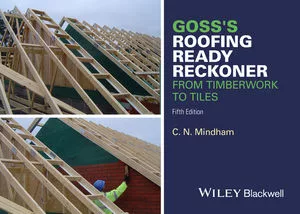Simple Solutions to Complex Roofing Problems: Taking a Second Look
Roof systems depend on the effective interrelationship of all of their components.
There’s no doubt that simple solutions to complex problems can be very appealing. And in this era of rising energy costs and concerns about the environment, choosing the right roofing system is one of the most complex problems that contractors, architects, building owners and specifiers must face. The simple solution to this challenge has somehow evolved to be: “White is always right.” In fact, the white roof bandwagon has gained so much steam that some cities are even saying that slapping white paint on a dark roof will solve problems ranging from saving energy to eliminating the heat islands that are melting the ice caps.
But, as with most simple solutions, the “white is right” mandate is getting a long second look now that it has been put to the test in the real world, and the empirical data is causing many authoritative roofing experts to say, “Not so fast.” Tom Hutchinson, a nationally recognized consultant on roofing issues, said, “Roof system design is a complex skill, and a successful roof system depends on the effective interrelationship of all its components. Attempting to effect change with a single component mandate is a faulty approach.”
Key Questions to Ask
Despite the complexity of the challenge, there are key questions that can help building professionals clarify their construction needs and select a suitable roofing system. These questions don’t deal directly with roof color, but they do provide important guidance about whether to use a black or white membrane in specific situations.
First, it’s important to ask, “Does the climate in the geographic area where I am installing a roofing system demand more heating days or cooling days?” In other words, “Am I going to spend more money in the winter heating a building with a reflective roof than I am going to save on air conditioning costs in the summer?” This question is especially pertinent in cool Northern climates, where building owners spend up to five times more on heating their buildings than on cooling them. In these situations, common sense tells us that a reflective roof may actually increase energy costs, energy consumption and carbon emissions. Hard science supports the same conclusion: A landmark study from the University of Kansas in 2010 concluded that when white roofs are used in Northern climates, “Global space heating increased more than air conditioning decreased, suggesting that end-use energy costs must be considered in evaluating the benefits … .”
The next questions to ask are, “What type of insulation will be used, what is the R-value, and how many layers will be installed?” State-of-the-art research is revealing that insulation levels are equal to or more important than roof color in affecting energy efficiency in a structure. Additionally, appropriate levels of insulation can mitigate the condensation problems that have been associated with white roofs in cooler climates. Mike DuCharme, Director of Product Marketing at Carlisle SynTec Systems, said, “It’s important to look at all of the factors involved when you are choosing a roof. Assess all of your costs — insulation, roof membrane, projected energy use — and then make your decision. For instance, EPDM roofing membranes are available in both black and reflective white. But it’s important for the designer to work with the roof membrane manufacturer to determine the best choice for your specific climate, and the best combination of roof color and insulation R-value.”
Another key question to consider is “How will adjacent building components be impacted by the solar rays reflected off of a white roof?” Building owners and design professionals are often finding out the answer to this question the hard way, after a reflective roof has been installed. For instance, highly concentrated solar rays can be reflected onto masonry walls, heating them well beyond anticipated construction tolerances. The masonry expands in the concentrated heat, control joints are squeezed shut, and the mortar shears and de-bonds. Moisture intrudes, exacerbates the deterioration, and the long-term deterioration can be severe.
Finally, ask, “How long will the roof last?” This very simple question is often overlooked in discussions about sustainability. But common sense tells us that a roofing system that lasts a very long time makes less of a dent on the environment and the budget than a roof that has to be replaced frequently. Recent studies have shown that black EPDM will last in the field for more than 30 years, and in laboratory tests for 50 years. “The bottom line is that the durability of EPDM makes it a smart long-term option one can’t afford not to consider,” said Jennifer Ford-Smith, Director of Marketing and Single Ply Product Management at Johns Manville.
It’s important to note that many manufacturers of both reflective and black roofing membrane want to ensure the right roof system is specified in every case. “We want to make sure that our products are used most effectively, “ said John Geary, Director of Education and Industry Relations for Firestone Building Products and Chairman of the Board for the EPDM Roofing Association (ERA). “Building owners have more choices than ever, and we know that there is an EPDM roof for every climate. EPDM has a proven track record of performance in all areas of North America and around the globe. A white surfaced roof is not automatically the best choice.”
So before jumping on the “white is right” bandwagon, do your homework. Ask the right questions, and select a roofing system that makes the most practical sense for your geography and climate.
Looking for a reprint of this article?
From high-res PDFs to custom plaques, order your copy today!




